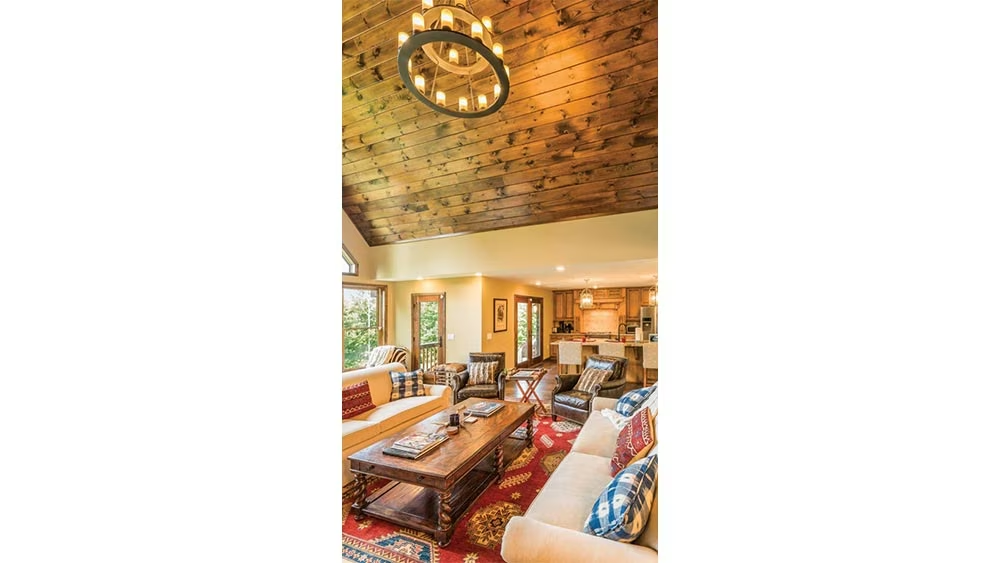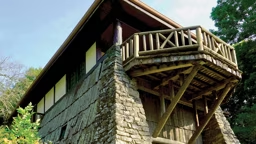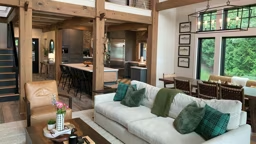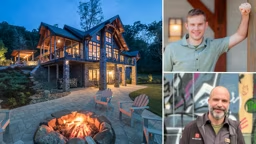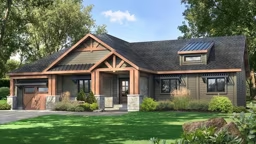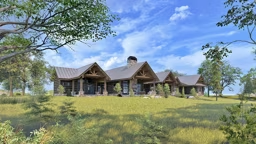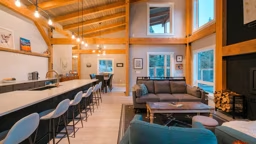It comes as no surprise that eliminating as many interior walls as possible will make a small home feel larger, but an interior without borders doesn’t necessarily equal a smart design. There are other tactics you should consider that will allow your home to feel spacious yet comfortable. Use our five favorite diminutive-design ideas to map out your small-scale timber home.
Raise the Roof

Design multiple rooflines into your timber home’s elevation. By combining dormers with shed roofs and peaks at varying angles, you can create the illusion of grandness, even on a small scale.
On a similar note, vaulted ceilings add extra volume to an interior, making the space feel large even when the area’s dimensions are not. Additionally, an abundance of windows not only will allow natural light to stream into the space; it visually expands sight lines, convincing the eye that the home has more square footage than it does. Kick this concept up another notch by installing clerestory windows high into the eaves.
First Impressions

As you begin to design your home, start with a central core, and allow the spaces to flow logically within it and from it. Your front door will likely open up to this area, so picture what you’d like to see the moment you walk inside. Many people desire a dedicated foyer — even if it’s a small one — to announce entry into the home in a formal way. For others, the doorway can casually open right into the living area or kitchen with no transition needed, saving square footage that can be reallocated elsewhere.
When drafting your home plans, keep the design simple and linear. You’ll be amazed at how strategically placed rectangles can result in really interesting floor plans. Use elements like bump-outs or curves sparingly. Complexity costs money and may result in wasted square footage.
Outside Influence

With a small footprint, exterior living becomes just as vital as what is on the inside. Create spaces that connect to the outdoors. Retractable window walls or garage-style doors that open up the great room area are the ultimate way to blur the lines between indoors and out. If this kind of elaborate home-design element isn’t in your budget, there are simpler ways to achieve the same effect. Screened-in porches, balconies — even skylights — allow your surroundings to enter your home, making it feel more expansive.
Appliance Reliance

The kitchen is a complex space to design in any timber home, large or small, so make every square inch count. One way to tackle this space is to select your appliances first then design your kitchen around them. It may seem like putting the cart before the horse, but it’s a lot easier than trying to shoehorn refrigerators and stoves into an under-designed space. If you know exactly what size your appliances will be, you can create an effective workflow and storage plan around them.
Use Your Illusion
Photo: David Brown
Home: Ritz-Craft Custom Homes
There are a few cosmetic tricks you can use to fool the eye, giving the perception of space that isn’t there. On the exterior, board-and-batten siding draws the eye vertically, giving the illusion of size and height. Inside, a monochromatic color scheme in varying shades of the tone will blur the lines between spaces without being boring. Then, choose one primary accent color and use it in various ways (throw pillows, vases, rugs, draperies, appliances, etc.) through your entire home. This path of color will encourage the eye to move around the interior and visually connect one room to the next, expanding the idea of space.





